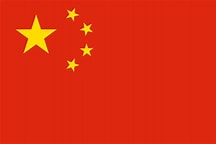The Russian invasion of Ukraine has highlighted the strength of Ukraine’s resistance. The assumptions that Ukraine would surrender and its European partners would acquiesce have backfired. Ukraine’s political leaders have not only shown immense strategic acumen and will to resist the invasion, its civil society and the military have also proved resilient in defending their territory.
Battlefront Lessons
As the war progressed, the conflict has evolved into an intense technological war. A war shaped by a variety of new and old technologies, battlefield transparency and precision strikes. In fact, the newer technologies such as drones and missiles and other unmanned systems have made the tactics of manoeuvre warfare – both defensive and offensive – somewhat less relevant. By avoiding direct contact with the enemy, these technologies are creating newer battle-spaces, and gray-zones, where the presence of military personnel and equipment is too risky to prosecute large-scale military operations.
Three aspects stand out. First, the situational awareness down to the last enemy soldier and weapon-platform is a vital operational necessity. Use of a variety of sensors, to include optical, seismic and electromagnetic devices, arrayed over land, air and space, and integrated over secure command, control and communications systems is an inescapable requirement. Ukraine has operationalised a range of battlefield information management systems such as the DELTA and KROPYVA systems to varying degrees of operational efficiency. However, the most significant aspect has been the fielding of the `situation awareness centres` to enable faster conduct of operations, with fewer resources. These nodes have had a notable impact on the management of Ukrainian forces on the battlefield. That information is power was always a given, but that it could be produced and utilised more innovatively has been quite revealing in the Ukraine War.
Second, deep precision strikes with a set of highly agile systems such as long-range artillery, hypersonic and cruise missiles, drones and uncrewed systems, and offensive electronic warfare platforms to destroy the enemy positions, is the key to successful battle outcomes. Ukraine has deployed a variety of precision-strike systems to include HIMARS rockets and TOCHKA-U missiles, to target Russian military positions. Likewise, Russia has also relied on precision strikes, with KALIBR and KH-22 missiles, to target Ukrainian cities, while deploying the ISKANDER missile system to target the military positions and infrastructure along the battlefront. Striking deep and hard, and beyond the visual horizon, will be the key in future conflicts.
Third, the adoption of robust measures to protect its people, equipment and infrastructure from the offensive manoeuvres of the enemy has been another distinctive feature of the Ukraine war. Securing the populace and critical infrastructure assumes added importance, when long-range drone and missile systems allow targeting of communities and assets far removed from the immediate battlefront. Moscow and Kiev, the two capital cities, have witnessed repeated missile and drone attacks, in one form or the other. A secure hinterland adds to the resilience of its citizenry in war.
War-Room Lessons
The nature and dynamics of Russia’s war against Ukraine is paradoxical. While, Russia seeks to protect the residents of the Donbas region, this rhetoric conceals Russia’s real ambitions of restoring its once lost territories. As Zbigniew Brzezinski, once put it, “without Ukraine, Russia ceases to be an empire”; and that seems to be the current drift. Even after having suffered heavy losses, Russia is showing no signs of backing off. On its part, Ukraine has dealt with Russia’s attacks with uncommon valour and courage as a nation. The Oval Office spat puts a new twist to the future of Russo-Ukraine war, but that does not take away the wider military learnings of the war.
Three aspects stand-out. First, the Ukraine war is a striking lesson in demonstrating political will and societal resilience. Building state resilience underpinned by the resilience of its citizenry, its soldiers and leaders is the key to a state’s survival in conflict. This would include the requirement to mobilise its people and the industry for war, and keep them motivated to fight a long drawn-out war. Ukraine’s effort to “communitise” and “corporatise” the war effort has been its outstanding feature of this war. This can well serve as a useful template to resource one’s military, to resist a stronger adversary.
Second, the Ukraine war highlights the importance of the pace of strategic decision-making. Faster news cycles, transparent battlefields and proliferation of precision strikes dictate agile national security structures, which enable speedier planning and decision-making. As a case in point, defence procurement-related decision-making often does not pass this test. Sometimes risk-averse political leaders and military bureaucracies can become the root cause for lack of timely action. But then, Ukraine’s leaders have shown enormous courage to tread risky paths to secure their country’s territorial integrity and sovereignty.
Third, this war also highlights the need to invest in deterrence. One of the crucial responsibilities of national leadership is to deter coercion and aggression. Deterrence is a national effort to restrain an actor from undertaking action. But then as Mick Ryan, a noted military analyst, puts it conventional deterrence is a blurry idea, which is difficult to create and sustain, as it can dissipate when it is most needed. The Ukraine war illustrates that we need a reliable theory of deterrence, which encompasses a robust capacity to field men, machines and material, to fight long-drawn wars.
Defence-Industrial reset
With the Soviet collapse in 1991, Ukraine inherited around 30 per cent of the Soviet arms industry. These comprised around 700 Soviet-era enterprises, employing over one million workers. Then, Russia’s invasion of Crimea in 2014 triggered its quest to strengthen its military capabilities, which in turn, drove the transformation of its defence industry. By prioritizing innovation and technological adaptation, Ukraine has attracted sustained foreign investment, ensuring that the industry is viable in the long term.
Two aspects stand out. First, as part of the strategic reset, the Ukrainian defence industry witnessed changes at three levels: the creation of a new Ministry of Strategic Industries; the introduction of transparent arms procurement regulations; and the corporatisation of state-owned defence enterprises under its largest arms manufacturing conglomerate, the UkrOboronProm. This included legislation of governance standards across the state-run arms companies to enforce better management practices and make them increasingly attractive to foreign investments and technology partners. As a result of this expansive defense-industrial reset, today more than 500 arms-producing companies, employing around 3,00,000 workers, are fully operational.
Second, Ukraine has encouraged the rise of private sector in defence sector, which surpasses the state-owned defence companies in terms of efficiency, innovation and adaptability. Today, more than 54 per cent of defence procurement orders go to the private players, whereas the state enterprises receive 36 per cent of the share, while the rest is met through imports. This has been accelerated by government initiatives, such as Brave1, a State-led platform that assists technology developers. In the last two years, Ukraine government’s Brave1 initiative has grown to support an overwhelming 1500 military technology start-ups. Private defence enterprises have been the bedrock of the Ukrainian war effort.
An evolving paradigm
The war in Ukraine has proved that technology is an important arbiter on the battlefield. One technological shift is obvious: drones and autonomous systems have become a mandatory component across the ground, maritime and air warfare domains. The Ukraine war also reiterates the increasing importance of battlefield adaptation and on-the-run technological innovation. Kyiv has demonstrated its ability to rapidly develop a strategic strike capability, with a mix of weapon systems to include ballistic and cruise missiles, guided munitions and long-range drones and unmanned systems, at commensurate ranges in order to achieve parity with a superior military adversary.
Beyond that, the meshing-in of AI has led to the democratisation of battlefield. Today, a modest infantry soldier armed with an inexpensive drone can pick up targets beyond visual horizon using AI-driven open-source information and then combine this with operational intelligence for precise action. AI is also rapidly changing how military leaders make battlefield decisions. AI can help shorten the kill-chain between when a target is detected and when it can be attacked.
And lastly, these newer technologies are also driving new thinking about military doctrines, structures and tactics. With passage of time, closer integration between humans and drones will drive further innovation and require new structures, tactics and training. Militaries that can adapt to the intellectual and technological demands of the evolving battlespace will have greater chances of operational success at least human cost and effort.
Source:
Three Years Into Russia-Ukraine War: Lessons In Military Transformation








